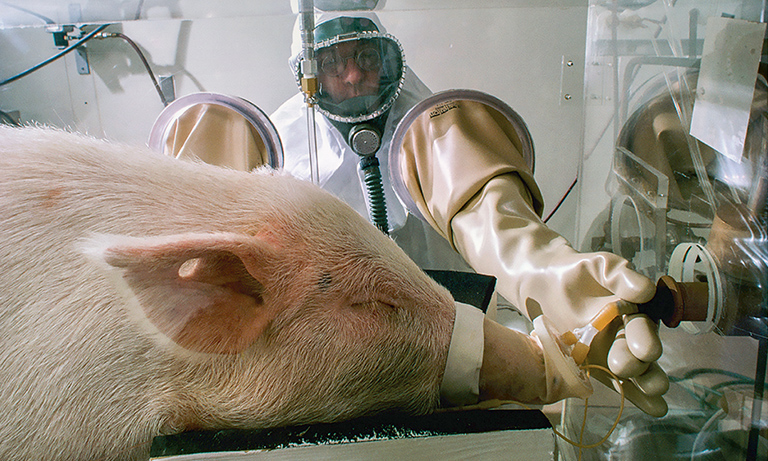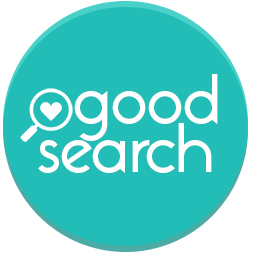Cost Of Cruelty
Data from animals artificially induced with human disease or injury is non-predictive. Researchers try to replicate findings in nonhuman subjects for decades — but often end up with info unrelated to human health or cures. Animals live in perpetual pain. Overdosed, burned, shocked, surgically mutilated, choked, beaten. Science can do better. Animal-free research tools are not an alternative. They are a better way, for animals and humans. If you care about taxpayer waste, human health, medical progress and animal cruelty… use your voice to end animal experimentation.
- Obstacles To Changing The Research Status Quo
- Medical Groupies: God-like reverence for doctors and all forms of medical research. White-coat heroes. Seen as gatekeepers to life-death.
- Media Taboo: Sacred-cow subject. Animal experiments exist beyond scrutiny in TV, film, news. I.E., YouTube bans Kinship Circle's video The Multi-Billion Dollar Lie in select countries and restricts viewing in the U.S. — simply for footage of animal experiments inside actual laboratories.
About $15 to $18 billion a year. That's how many taxpayer dollars annually fund government animal research. U.S. National Institutes of Health (NIH) is the chief grant giver. But the full scope of cross-agency funding for a system flawed by duplication, fraud and human harm is publicly unknown. Fiscal hawks, are you listening? It's a hard sell, considering animal tests render just 10% of new pharma products “safe” for humans.1 Additionally, NIH awards some $2.2 billion in contracts or grants to foreign entities for animal lab projects in 10 countries.2 Money is squandered on repetition of the same animal tests. By some estimates, U.S. agencies exhaust 50% of research funds on crude animal experiments — even though 89% of animal labs are not reproducible, a basic scientific tenet.3
- You Paid For It$3 Million+: A decades-long Univ. of Wisconsin-Madison sound localization lab mangles cats to study how human brains process sound. Holes are drilled in a cat's brain to screw in a steel column. A second surgery opens the cat's head to damage inner ears with toxic matter and lodge electrodes in ears. The cat awakens deaf to undergo drills encased in a nylon sack. Double-Trouble, an orange cat in PETA photos, is starved and then rewarded if she looks at noise projected from various directions. Lab records note neurological signs: She twitches, her face is partially paralyzed and 3 months post-surgery a head wound is “open, moist w/ bloody purulent discharge.” Before killed to dissect her brain, she is “depressed.” In 2013, USDA validates PETA allegations, citing UW for heating-pad burns to a cat, Broc, and “recurring infections…”
“Funding violent experiments on cats means $3 million less is spent on research to actually improve human health. This can be conducted ethically with sophisticated brain imaging-recording techniques in humans.” Dr. Lawrence Hansen, neuroscience-pathology professor. Top 100 Brain Researchers, Journal of Alzheimer's Disease.4 - You Paid For ItOngoing Torment: Malnourishment kills 14 baby rhesus macaque monkeys at University of CA-Davis' California National Primate Research Center (CNPRC), a facility that houses some 5,000 primates for research on AIDS, autism, Alzheimer's, malaria, allergies… Another 5 mature monkeys are dead from gastrointestinal distress, infection and injury. 2/4/13: U.S. Dept. of Agriculture faults UC-Davis in the 2009-2010 deaths. 2011: USDA cites UC Davis for experimentation upon a sick, balding monkey with chronic vomiting. In routine tests over many years, CNPRC macaques are intentionally dehydrated to force compliance with experimenters who offer water or juice droplets. Monkeys outfitted in head masks are poisoned in inhalation studies. In HIV studies, macaques infected with SIV — a primate virus that has never produced data applicable to human HIV — suffer tremors, lesions and weight loss before killed and dissected.5
2022: Elon Musk's Neuralink brain-computer chip company, and its lab colleagues at UC-Davis' CNPRC, are cited for Animal Welfare Act (AWA) violations during brain-implant experiments on 23 monkeys from 2018-2020. Physicians Committee for Responsible Medicine (PCRM) urges USDA-APHIS to examine charges of “extreme suffering” caused by “drilling holes in the animals' skulls” to implant chips. Animals endure chronic infections that “compromise their health, as well as the integrity of the research.” Some have seizures. Several die quickly. PCRM's complaint uses lab protocol and veterinary reports retrieved from UC Davis via the state's open records law. A PCRM lawsuit filed in Calif. Superior Court of Yolo County, asks for a Writ of Mandate ordering UC-Davis to submit photos, video, research codes and ID numbers for all monkeys used in Neuralink experiments.6 - Billions Of Dollars & Decades Lost: Mice, the go-to human disease model, supply 100% inaccurate data for sepsis, burns, trauma. A study published in National Academy of Sciences backs what advocates for human-focused research have long argued: Discrepancies between species (genetic, metabolic, anatomic, physiological, psychological) render mice largely useless in immune system studies, including cancer and heart disease. The paper reveals why 150 animal-tested sepsis drugs fail in humans. Sepsis, full-body inflammation from infection, strikes 750,000 patients, one quarter of whom die, and annually costs the U.S. $17 billion.
“They're so ingrained in trying to cure mice, they forget we're trying to cure humans.” Ronald W. Davis, a Stanford University genomics expert and study co-author, says scientific journals initially rejected their paper.7
Animal data creates false assumptions that speed new drugs from clinical trials to market, but lead to unforeseen adverse drug reactions. Study investigators find that humans suppress a gene similar to a gene actively used in mice. If researchers disable this gene in lab mice, a test drug succeeds. In humans, the same variable actually increases fatality. Dr. Richard Hotchkiss, a Washington University researcher not involved in this study told New York Times: “This paper argues strongly — go to the patients. Get their cells…their tissues whenever you can.” To understand the disease process, “you have to go to the patients.”
Experimenters Argue That Repetition Leads To Answers. Repeating the same experiments again and again, for decades, is a hard sell — given the lack of human cures from animals induced with disease/injury in settings humans never encounter. Animals exist in perpetual distress from handling, confinement, noise, isolation, pain, fear… Stress hormones influence animal data.8 Moreover, duplicative animal tests fail to generate consistent info. One study reveals that 47 of 53 landmark findings can't even be reproduced! “It was shocking. Pharmaceutical industry relies on these findings,” says Glenn Begley, former head of global cancer research at Amgen. Failure is blamed, in part, on animal models irrelevant to cancer and other diseases, in an arena that fosters poor science, even fraud, as researchers fight for funds.9
“Experiments on animals offer only the illusion of control. By simplifying and segmenting the life of an organism, we create false data which, combined with the differences among species, make our efforts to apply the results to man, useless.” Dr. Roger E. Ulrich, Behaviorist Psychologist, ex-vivisector
- You Paid For It$32 Million: In 1985 activists free baby Britches from a University of California lab. An infamous photo of Britches, stolen from his mother to sew his eyelids shut, becomes emblematic of animal testing horrors. Britches' torture, along with more lab exposures, initiates landmark Animal Welfare Act amendments. UC-Riverside now advances human-relevant stem cell tests… But the brutal experiments are back, thanks to Harvard University's Margaret Livingstone. The experimenter's 40-year resumé boasts orphaning newborns to stitch their eyes shut or she isolates them with lab techs in welding masks (!) to blind babies from the sight of human or primate faces for a year. Livingstone then measures how badly the monkeys' brain and visual development are impaired. To deliberately rob infants of their natural visual stimuli serves no medical purpose — other than, big reveal here: If you make an infant monkey blind and motherless, his brain and vision won't mature normally. He is physiologically and psychologically broken for the rest of his brief life.10
Why are taxpayers still funding data known for decades? Maternal deprivation tests in infant monkeys began (1960s) with Harry Harlow's Well Of Despair.11 Univ. of Wisconsin isolates newborns with a live snake or wire surrogate peer to simulate adverse rearing conditions. Over half of century of similar experiments show that baby monkeys self-mutilate, pace and rock in cages, continually back-flip and exhibit other stereotypies symptomatic of elevated stress hormones, frustration and despair. Yet Livingstone incoherently believes the tests have scientific merit. To gage damage and face recognition capacity, she restrains monkeys with a surgically embedded steel head-post or coerces them to bite down on a bar. In some cases, she implants brain electrodes to observe how impaired brain cells react to visual signals. After years of abuse, most monkeys are killed to dissect their brains. Mother monkeys suffer too. Livingstone admits they wail in anguish as their infants are torn from their hands.
“We ask that PNAS retract Professor Livingstone's article ‘Triggers for Mother Love’ due to the unethical practices and research standards it promotes and its failure to advance scientific knowledge.” Livingston draws flak in her own backyard when over 380 medical and academic peers join Harvard primatologist Richard Wrangham in protest. In an open letter to National Institutes of Health, they ask NIH to defund Livingston's lab because it is superfluous, cruel and scientifically baseless.
Who Pays For Lab Mistakes And Do-Overs? National Institutes Of Health (NIH) “under-funds patient-oriented research,” with biggest cut for animal studies.12 Some 70% of the NIH budget goes to animal research grants. Plus, taxpayers bankroll all government agencies that fund animal experiments: Substance Abuse and Mental Health Services (SAMHSA), Health Resources and Services Administration (HRSA), Food and Drug Administration (FDA), Centers for Disease Control and Prevention (CDCP), Agency for Health Care Research and Quality (AHRQ), Office of Assistant Secretary of Health (OASH), Department of Defense (DOD)…
- You Paid For ItAcademic Animal Research: Universities themselves concede that a highly competitive grant culture creates pressure for experimenters to churn out protocols, regardless of existing data or scientific validity. Each year, schools receive millions that help pay utility bills and other overhead unrelated to research. Quick money comes from animals, not clinical or cell-line studies. A weak economy only heightens contests, with universities vying for a grant pool reduced by federal spending cuts.
- Big Pharma Reaps Rewards From Tax-Funded Grants Too: “Big Pharma and an academic institution agree jointly on which projects to fund, and in return for financing, companies get first option to commercialize results.” Liaisons with academia [involve] millions of dollars. This monetary partnership has flourished as more universities seek to evolve scholastic research into product. “Universities are [always] looking for new sources of funding. These factors dovetail nicely with Big Pharma's needs.” In fact, Pharma's capacity to invest tens of millions has resulted in joint steering committees that pick which academic research gets funding.13 “Right now, the private sector does half as much animal testing as government and taxpayer-funded university labs, but is responsible for 85% of FDA-approved medical innovations. This is [yet another example] of inefficiency and waste in government-funded animal experiments.”14
The Animal Model Presumes An Effect In One Species Occurs In Another. Yet science says genetic, metabolic, physiological and psychological traits vary significantly from species to species. A drug metabolized in a pig, dog or mouse doesn't look like the same drug in a person. Physiological pathways are unique in each species. In The Flaws and Human Harms of Animal Experimentation (NIH),15 author Aysha Akhtar footnotes myriad treatments that fail in humans due to “disparities between the animal experimental model and the human condition.”16 Today's drug fail rate hovers around 96%, up from an FDA calculated 92% in 2004. When drugs flop across the disease board, the problem begins with an “inability to adequately model human diseases in animals and the poor predictability of animal models… Poor efficacy and safety problems are not predicted in animal tests.”17, 18
Biotechnology has evolved with cellular, genomic and computational tools. Human biology tools mean researchers don't need to extrapolate info from animals to people. Guesstimates give way to a more predictive science. But “financial investment in human-based tech generally falls far short of investment in animal experimentation.”15, 19 Funding is needed to engineer and validate animal-free systems, plus advance models that simulate entire-body function — not just lone cells or organs. Animal-free research is not “alternative,” a word that implies animal tests are the “gold standard,” while human-relevant tools are less sophisticated. In fact, the reverse is true.






































